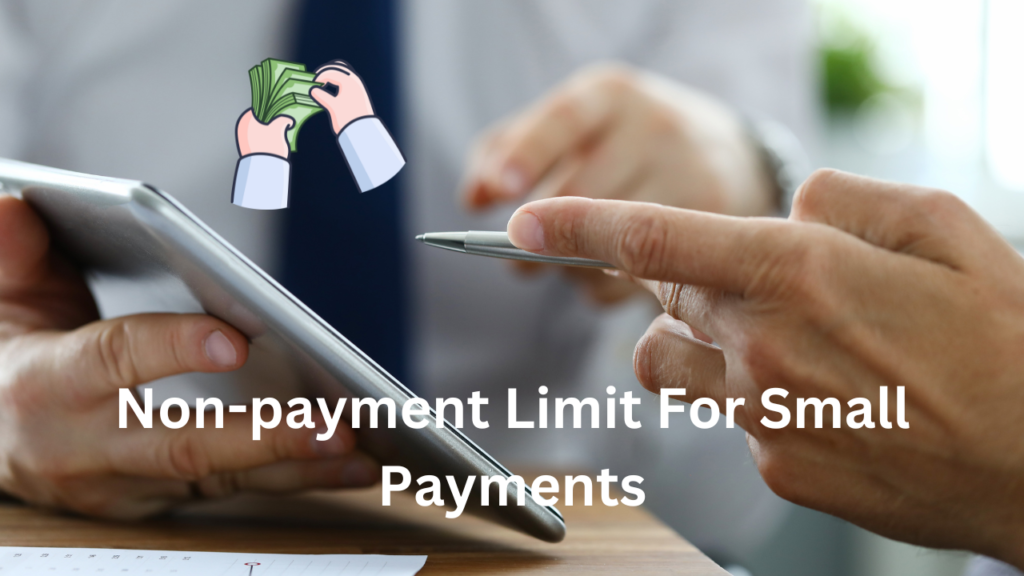These days, our lives are changing very fast. One big change is how we pay money. People are using cash less often. They are using digital payments more often. South Korea is leading this change. South Korea has very good technology and takes new ideas quickly. A key part of digital payments is the non-payment limit for mini payments. This article explains the Non-payment Limit For Small Payments in Korea. It also looks at how it affects businesses and people.
What is the Non-payment Limit For Small Payments?
The non-payment limit for small payments is a limit. Below this limit, certain rules or fees may not apply but are essential for digital payments. They affect how easy it is for consumers to make payments and how much businesses have to pay to process payments. In South Korea, this limit applies to many payment methods. These include credit cards, mobile wallets, and others.
Non-payment Limit For Small Payments in Korea’s Economy
Small payments are very crucial in Korea’s economy. Many everyday transactions are small payments, for example, such as buying coffee, using public transport, or buying things online. The ease and convenience of small payments are a big reason why Korea has adopted cashless payments so quickly. But small payments can have fees or other costs, which can make them less efficient.
Simple Rules for Small Payments in South Korea
South Korea has laws about payments. These laws help new payment ideas and keep people safe. There is a limit for small payments. Under this limit, payments have fewer rules, making them easier for people and businesses.
The small payment limit helps small payments grow. It lets more people use digital payments. The exact limit depends on the payment type, amount, and risks.
What Businesses Should Know
For companies, grasping the small payment limit is vital. This cap impacts fees, processing speed, and overall costs. Firms dealing with many tiny payments may find staying within this boundary boosts efficiency and savings.
Reducing Costs
The small payment limit in Korea often means cheaper transaction costs help small and medium businesses run on thin profits. Keeping under this cap avoids extra fees and rules, letting them pass savings to buyers or reinvest in operations.
Enhancing Customer Happiness
Simple small payments create a positive customer journey, removing tiny transaction barriers, businesses encourage more frequent purchases and loyalty matters for retail, food services, transportation, and other sectors with common small payments.
What Consumers Should Know
For buyers, Korea’s small payment limit affects transaction ease and security. When appropriately set, consumers enjoy seamless yet secure payment experiences.
Accessibility and Ease
Non-payment limits for small purchases make life easier for buyers. They let people buy things fast without more checks or charges help in daily tasks like getting food from a store or riding on a bus.
Security Checks
The small payment limit makes transactions simpler. However, it is crucial to watch for security risks. In Korea, regulators have put safeguards in place. They monitor for fraud, protect data, and help customers with disputes. Finding the right balance between convenience and security is a crucial challenge.
Current Trends and Future Outlook
As technology advances, the small payment limit in Korea may change, many trends and factors will likely transform its future.
Growth of Mobile Payments
South Korea leads in mobile tech, with widespread smartphones and mobile payment systems driving more small payments via mobile wallets and contactless methods. The small payment limit supports this trend by reducing friction.
Impact of New Rules
Regulatory changes can affect the small payment limit. As governments and finance institutions balance innovation and security, they may adjust the limit or add consumer protections. Businesses and consumers should stay updated to adapt accordingly.
Consumer Behavior and Preferences
People are changing how they pay. They prefer digital payments over cash. Small payment limits should follow this trend. Digital payments systems will grow more popular. Being flexible is essential. Businesses must adapt to what consumers want.
Conclusion: Non-payment Limit For Small Payments
In Korea, there is a rule called the 소액결제 미납 한도. This rule is very important for digital payments. It affects businesses, people who use digital payments, and the laws around digital payments. The non-payment limit tries to balance making payments easy and keeping them safe. As digital payments keep changing, businesses and people need to adapt. The government needs to make sure the non-payment limit helps new ideas and protects against risks. By understanding this rule, everyone involved can feel good about using small digital payments in Korea.

